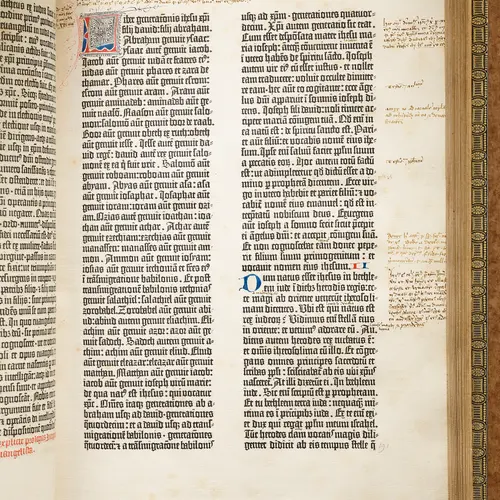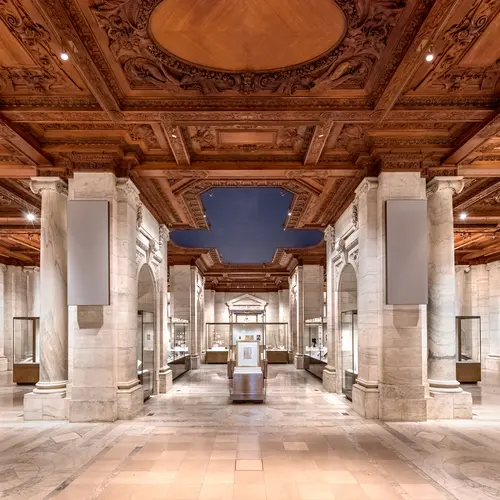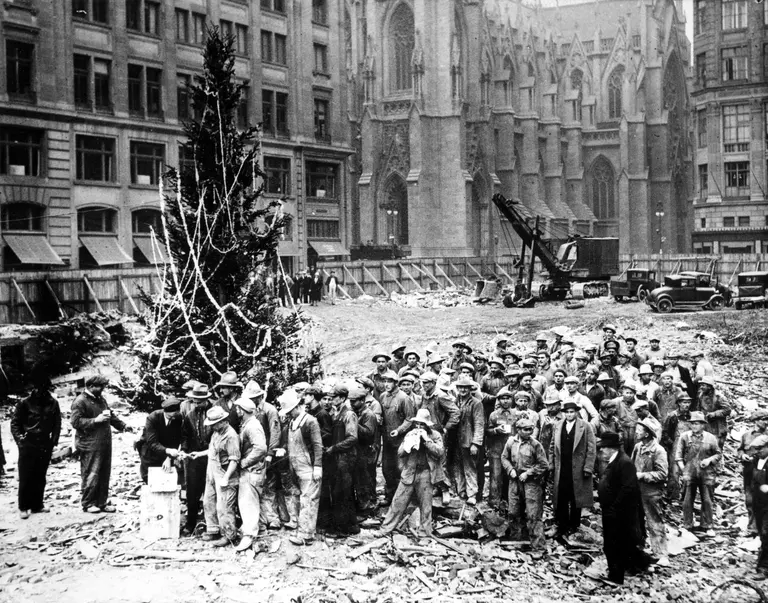7 historic treasures to check out at the new NYPL exhibit
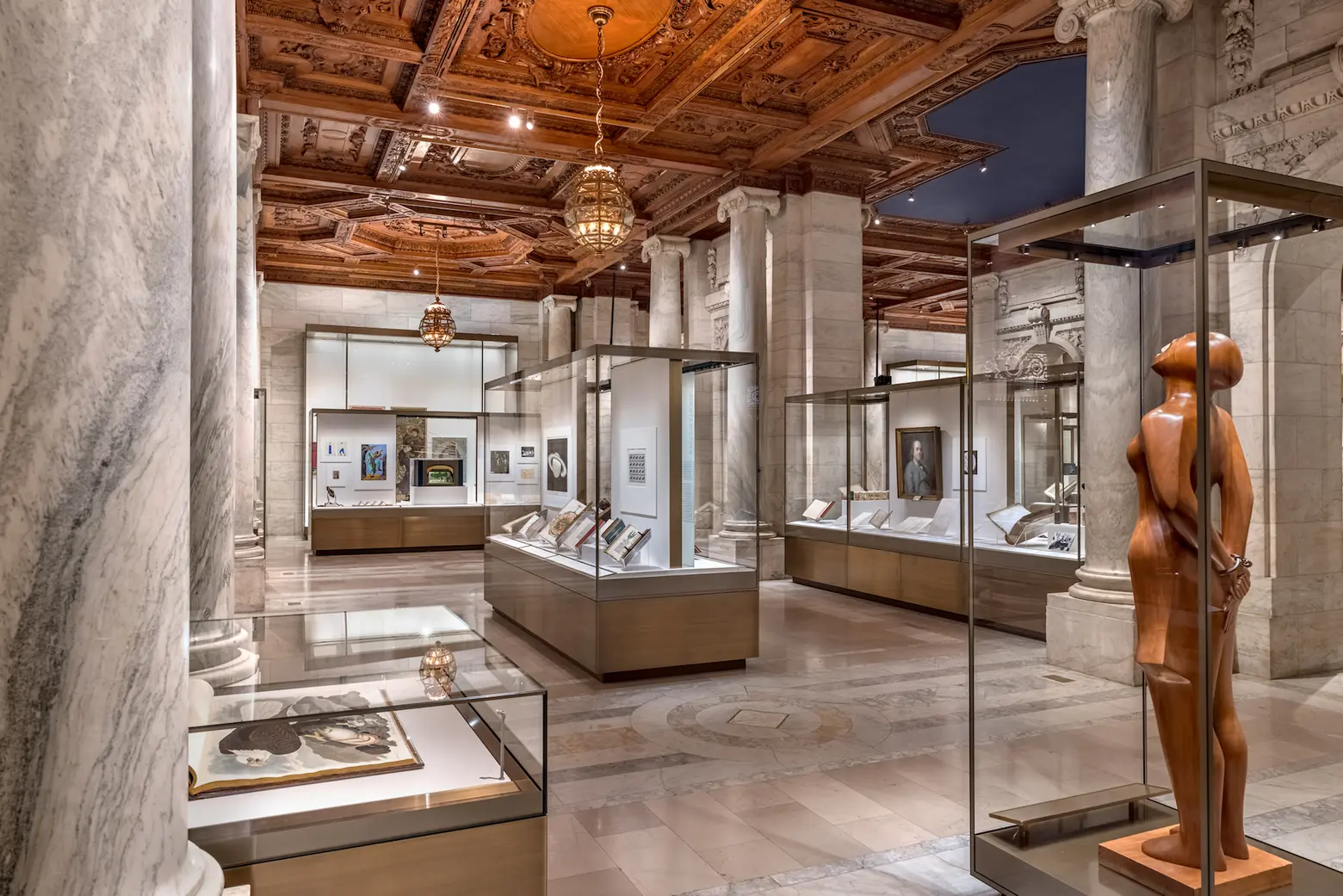
Photo: Max Touhey/ NYPL
More than 250 historic items and artifacts, many of which the public has never seen before, are now on display in New York City. The Polonsky Exhibition of the New York Public Library’s Treasures opened at the Stephen A. Schwarzman Building last week, showing off just some of the institution’s incredible collection of objects, images, letters, manuscripts, and more that spans 4,000 years in history. From a draft copy of the Declaration of Independence written by Thomas Jefferson to the stuffed bear that inspired the Winnie-the-Pooh stories, the library’s first permanent exhibition allows the public to connect intimately with history at no cost.
Certain objects will remain on display long-term, while others will be rotated out and swapped with new items over time. The exhibition is separated into nine themed sections, including “Beginnings,” “Performance,” “Explorations,” “Fortitude,” “The Written Word,” “The Visual World,” “Childhood,” “Belief,” and “New York City.”


Photograph by Robert Kato, “Beginnings,” Declaration of Independence in Thomas Jefferson’s hand
The Declaration of Independence in Thomas Jefferson’s hand.
This copy of the Declaration of Independence written by Thomas Jefferson is one of only six manuscript versions of the document in existence. Jefferson wrote this copy for a friend soon after the ratification of the Declaration of Independence on July 4, 1976, according to the library. What’s notable about this document is the text in this draft that didn’t make it to the final piece, including Jefferson’s criticism of slavery and the slave trade, despite owning hundreds of slaves himself.
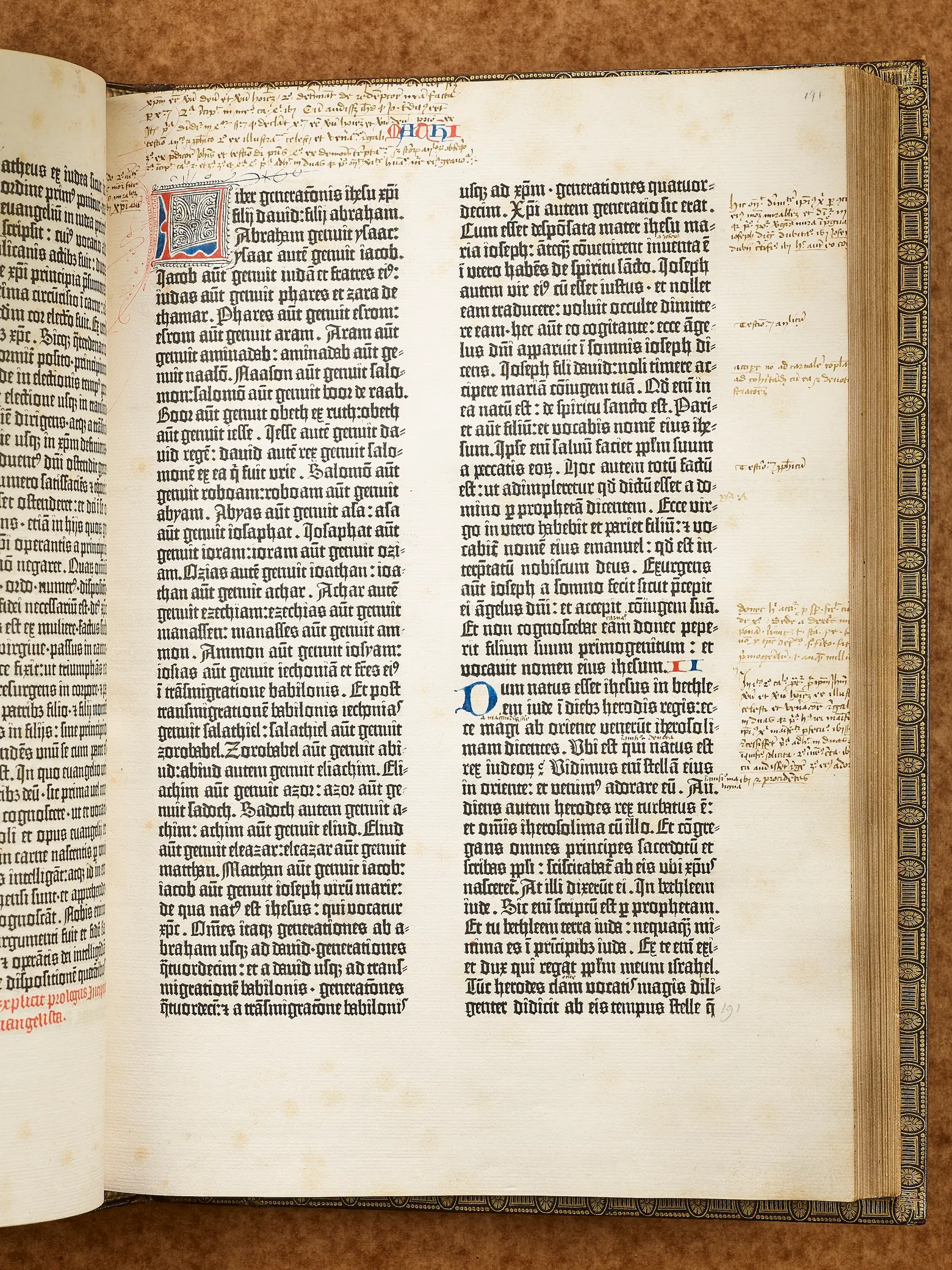
Photograph by Robert Kato,”Belief,” Gutenberg Bible
The Gutenberg Bible, printed in 1455. James Lenox’s copy, the first to be brought to the Americas.
In the exhibit’s “Belief” section is the first copy of the Gutenberg Bible to be acquired by a United States citizen. The bible, the first book to be mass-produced, was printed in the 1450s in Germany by Johannes Gutenberg. The copy on display at the library was acquired by NYPL founder James Lenox in 1847.

Photograph by Robert Kato, “Childhood,” Umbrella belonging to Mary Poppins author P.L. Travers

The umbrella belonging to Mary Poppins author P.L. Travers.
Author Pamela Lyndon (P.L.) Travers once owned this umbrella, which resembles the one that gave the title character the gift of flight in the children’s book Mary Poppins. Travers’ editor gifted the umbrella to the library in 1972, the same year the author herself donated artifacts related to her series. According to the library, Travers greatly admired a similar umbrella that belonged to her family’s maid.

Photography Robert Kato, “Explorations,” Christopher Columbus letter to Luis de Santagel 1493

The only remaining copy of the letter Christopher Columbus sent outlining his “discovery.”
Christopher Columbus outlined his discovery to America in several long letters. Written in Spanish, this copy acquired by the New York Public Library was addressed to Luis de Santangel, an official of the king who persuaded Queen Isabella to sponsor the journey, in approximately 1493. The letter was used as a public announcement, but also as propaganda to “publicize and strengthen Spanish territorial claims,” according to the library. The “Treasures” exhibit contains the only known surviving copy of the letter’s first printed edition.

Photograph by Robert Kato, “Written Word,” Virginia Woolf Walking Stick
Virginia Woolf’s walking stick left behind on a riverbank after her suicide.
This walking stick belonged to 20th-century modernist writer Virginia Woolf. On March 28, 1941, a depressed Woolfe put a stone in her fur coat and drowned herself in the River Ouse. Later that day, her husband Leonard found the walking stick by the river. In a letter to Vita Sackville-West, Virginia’s friend and lover, Leonard wrote: “[Virginia] has been really very ill these last weeks & was terrified that she was going mad again. It was I suppose the strain of the war & finishing her book [Between the Acts] … I think she has drowned herself as I found her stick floating in the river, but we have not yet found the body.”

Photograph by Robert Kato, “Performance,” Coco Chanel Shoe
Hand-painted ballet shoe worn by Serge Lifar.
These hand-painted gold shoes were worn by Serge Lifar, a French ballet dancer considered one of the greatest male dancers of the last century. Lifar was in the original cast of George Balanchine’s Apollo ballet (originally known as Apollon musagète), a story composed by Igor Stravinsky that centers on the Greek god of music. Designed by Coco Chanel in 1929, the shoe has long ribbons that can be tied to resemble a Grecian sandal.

Photograph by Robert Kato, “Childhood,” Winnie And Friends
The stuffed animals that belonged to the real-life Christopher Robin and inspired the Winnie-the-Pooh stories.
Since 1987, the real Winnie-the-Pooh has been at the New York Public Library, joined by his friends, Eeyore, Piglet, Kanga, and Tigger. Christopher Robin Milne received a teddy bear in 1921 for his first birthday with the boy’s collection of toys growing to include a donkey, piglet, kangaroo, and a tiger. A long-beloved part of the library’s collection of children’s literature, these stuffed animals were the inspiration behind several Winnie-the-Pooh classics, written by Christopher Robin’s father, A.A. Milne.
Free timed tickets for the Polonsky Exhibition can be reserved here.
RELATED:
